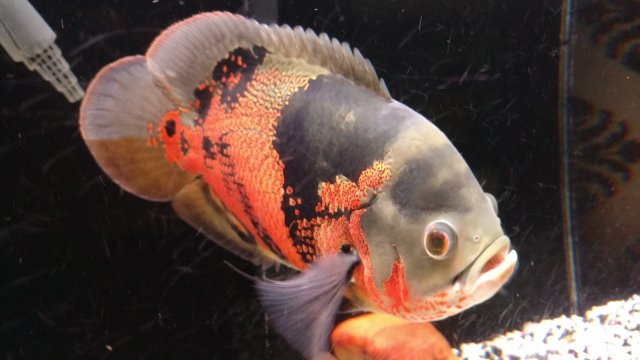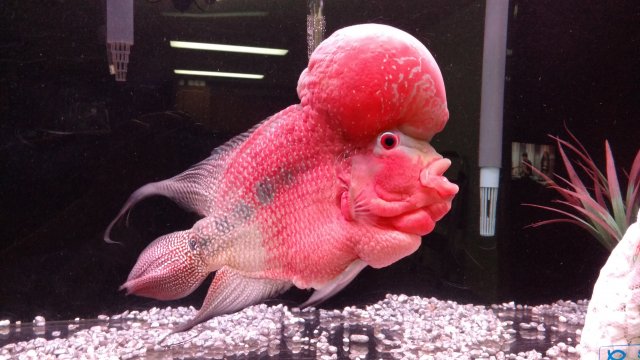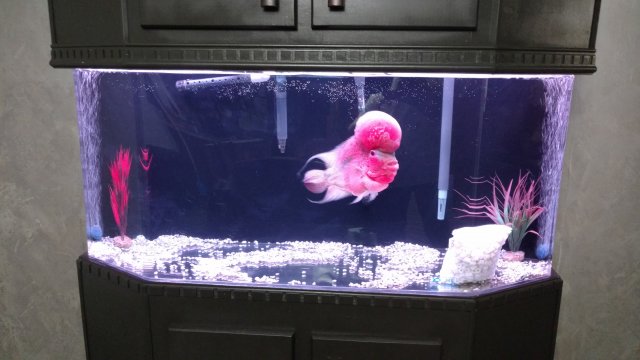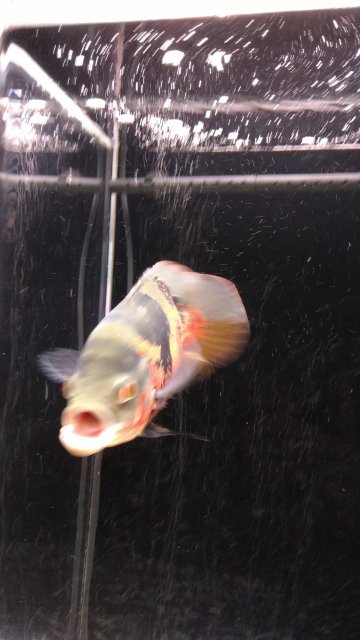With only a common (made up) name, there's no telling what its exact genetics are. Your best bet would be to ask the person that sold it to you.
Electric Blue Carpintis Cichlid ??
- Thread starter Adictd2Fsh
- Start date
You are using an out of date browser. It may not display this or other websites correctly.
You should upgrade or use an alternative browser.
You should upgrade or use an alternative browser.
ya he was sold as electric blue carpintinis what ever that is. lolWith only a common (made up) name, there's no telling what its exact genetics are. Your best bet would be to ask the person that sold it to you.
It is a carpintis, I have raised a few of them over the years, they get about 10-12" for a male and very aggressive. May or may not work out with green terror depending on the tank size. Very nice fish when they get larger
the tank is 125 gal 72" long i got green terror about 2.5", parrot flowerhon 2", and the carpintis 2". there are also 3, 4" severums in there but they will be coming out in near future.It is a carpintis, I have raised a few of them over the years, they get about 10-12" for a male and very aggressive. May or may not work out with green terror depending on the tank size. Very nice fish when they get larger
Might be fine in a 125, hard to say really but I would keep a divider on hand just in case and try to keep an eye on the tank, divide if needed. And be willing to make adjustments if it isn't working out.
wow that aggressive!? i hate when fish get like that it ruins the multi monsters in one tank thing. its ok and entertaining when they pick at each other but when they start fighting to death is no good. thanks for the good info i will definitely be watching out for this guy.Might be fine in a 125, hard to say really but I would keep a divider on hand just in case and try to keep an eye on the tank, divide if needed. And be willing to make adjustments if it isn't working out.
With the amount of hybrids floating around in the hobby, including crosses of H. cyanoguttatus & H. carpintis, I wouldn't be too quick to be definitive about anything sold with "electric" in the name. That was the point that I was attempting to make.
I own H. carpintis "Escondido", so I am well aware of what an H. carpintis looks like.
I own H. carpintis "Escondido", so I am well aware of what an H. carpintis looks like.
You have pick of your h. carpintis? i would like to make comparison. maybe i need to let mine grow out to get a better description. i understand were your coming from, we have got these all these fish mutted up pretty good. i myself like all these cross breeds. never know what your gonna get. The bad thing is, in the wrong hands it could be bad for the enviroment. From my experience the texas and convict cichlid will breed with almost anything that wants to breed. do you know is the texas a type of carpintis? I have been told no.With the amount of hybrids floating around in the hobby, including crosses of H. cyanoguttatus & H. carpintis, I wouldn't be too quick to be definitive about anything sold with "electric" in the name. That was the point that I was attempting to make.
I own H. carpintis "Escondido", so I am well aware of what an H. carpintis looks like.







